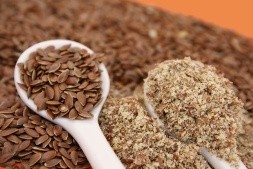Last week, my post concerned choosing better fats to help reduce blood cholesterol. This week, my topic is the other piece of the puzzle: fiber. Fat and fiber are the two nutrients to choose wisely to decrease blood cholesterol.
Talking about fiber usually leads to embarrassing conversations. The movements (no pun intended) of the gastrointestinal (GI) tract are usually not conversations enjoyed by the public. Words like stool, poop, gas, diarrhea, and constipation are considered private or reserved for the doctor’s office. Some comedians and movie producers use it for laughs. In this post, I will do my best to make the conversation interesting and fun.
**Before I begin, a word of caution: if you have been diagnosed with a GI disorder, then it is important to follow the treatment plan provided to you by your physician and registered dietitian. In some diseases, fiber intake must be reduced while the GI track heals from inflammation, surgery, or some cancer treatments. My comments are directed to prevention and wellness.
Everyone has heard the saying, “eat more fiber”. But what is fiber and how much should I eat?
Fiber is simply the part of the plant that we cannot digest. The human body does not have the enzymes necessary to break down the plant fibers. Therefore, it passes relatively intact through the stomach, small intestine, colon, and out of the body.
Fibers are found in plant foods and are classified in two categories: insoluble and soluble. Insoluble fiber promotes regularity by increasing stool bulk so transit time is reduced. Sources of insoluble fiber are: whole wheat flour, wheat bran, corn bran, and vegetables.
Soluble fiber is the type of fiber that dissolves in water to form a gel-like material. In the GI track, it will act like a sponge, binding dietary cholesterol and preventing it from traveling to the liver or circulating in the blood. By reducing the amount of cholesterol traveling in the blood, soluble fiber helps to lower blood cholesterol. Foods high in soluble fiber are: oat bran, oatmeal, legumes (dried beans like kidney beans, soybeans, garbanzo beans, black beans etc.), ground or milled flaxseed, peas, apples, citrus fruits, carrots, barley, and psyllium (bran buds and Metamucil).
Some food companies have extracted soluble fiber from plants and added the fiber to other foods. These naturally sourced fibers are called plant sterols (phytosterols) or plant stanols. In research studies, plant sterols combined with low saturated and low trans fat intake to lower LDL cholesterol. Local stores, Hy-Vee and Baker’s carry some of these products. A list is available at www.corowise.com. These products do contain calories, so if you add them to your daily food intake, you will need to subtract other items to avoid weight gain. Weight gain increases blood cholesterol levels.
So, how much fiber do you need? Age 50 and younger: men, 38 grams, women 25 grams; age 51 and older: 30 grams, women 21 grams per day.
Lastly, add fiber slowly to avoid GI distress (gas, bloating). If you currently do not eat a high fiber diet, you need to allow the natural bacteria in your digestive system to adjust to the change. Add fiber slowly over a six month period. Drink water, about 48 ounces daily. Fiber works best when it absorbs water, making stools soft.
Tips to add fiber
♥ Start your day with fiber – oatmeal or cereals that contain 5 grams or more of fiber. Add one tablespoon of ground flaxseed to oatmeal after the oatmeal is cooked.
♥ Use whole grains – whole grain bread, brown rice, barley, whole wheat pasta, bulgur wheat
♥ Add legumes to soups, stews and tossed green salads. Use hummus for a bean dip with vegetables
♥ Add fresh or frozen vegetables to soups, stews, or sauces. Puree them into spaghetti space or stews if you have family members who are picky eaters.
♥ Eat a small piece of fruit at every meal. Those large apples and oranges that look like softballs are two to three servings of fruit. They can be shared among family members
♥ Snacks count. Fresh, canned, or frozen fruit, raw vegetables, low fat popcorn, whole grain crackers, handful of unsalted nuts, dry cereal trail mix are some choices.
Plenty of information ... not sure if it was all fun. But Alegent Health’s Heart Healthy Cooking Class is fun. On October 19th, the chef will be presenting plant based food items that can be served both as a side dish or an entrée. Try some new fiber foods. See you there.




